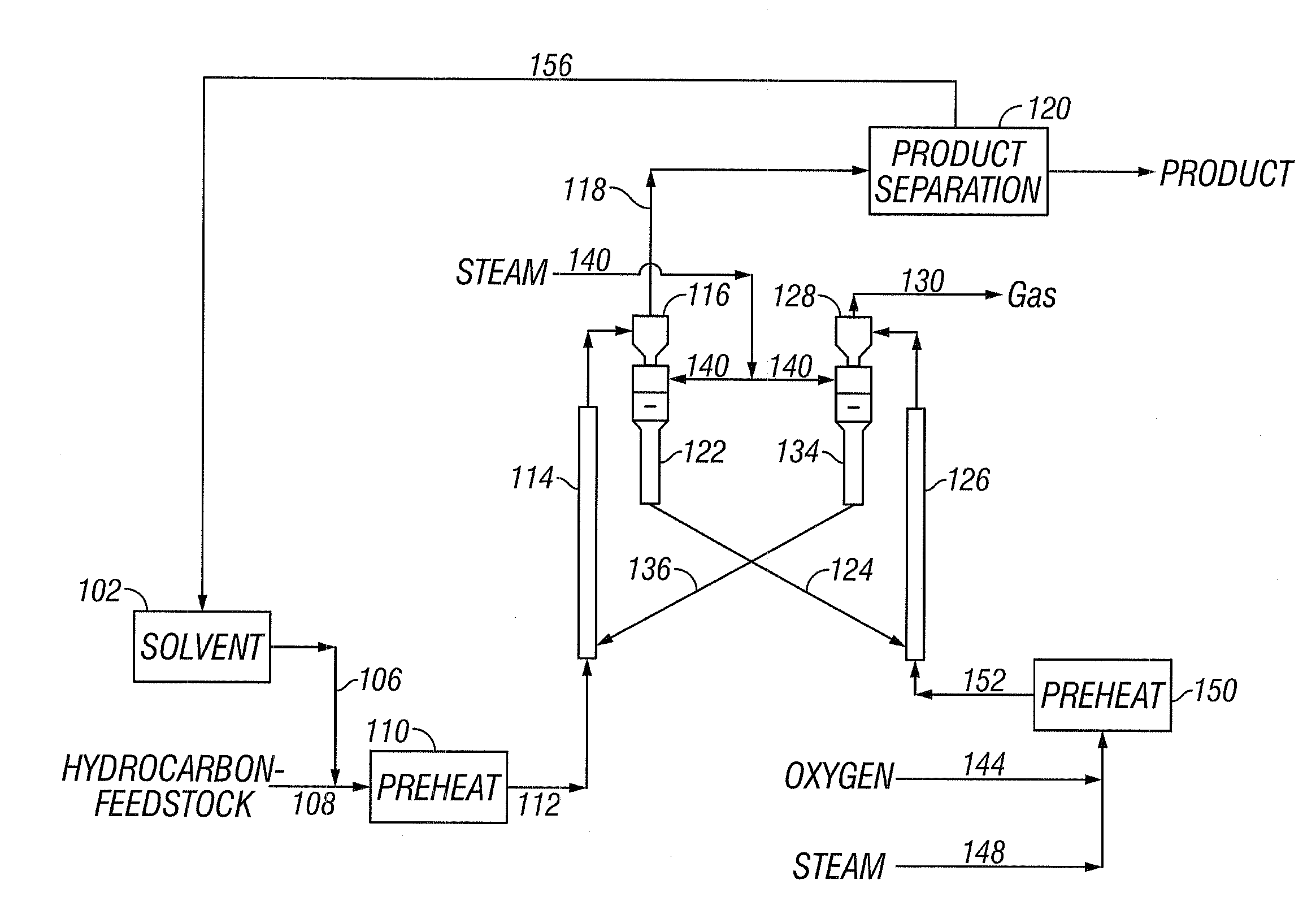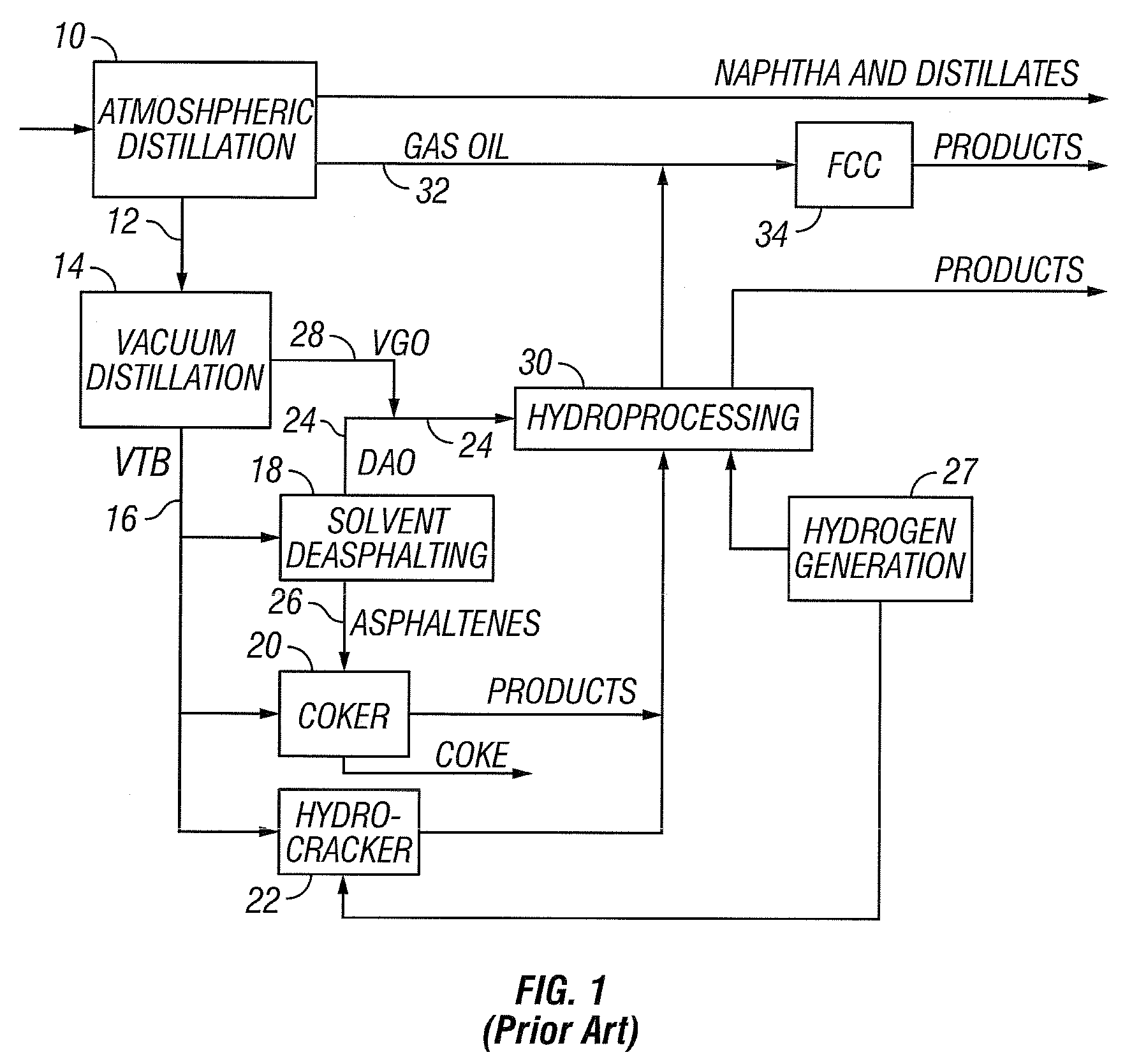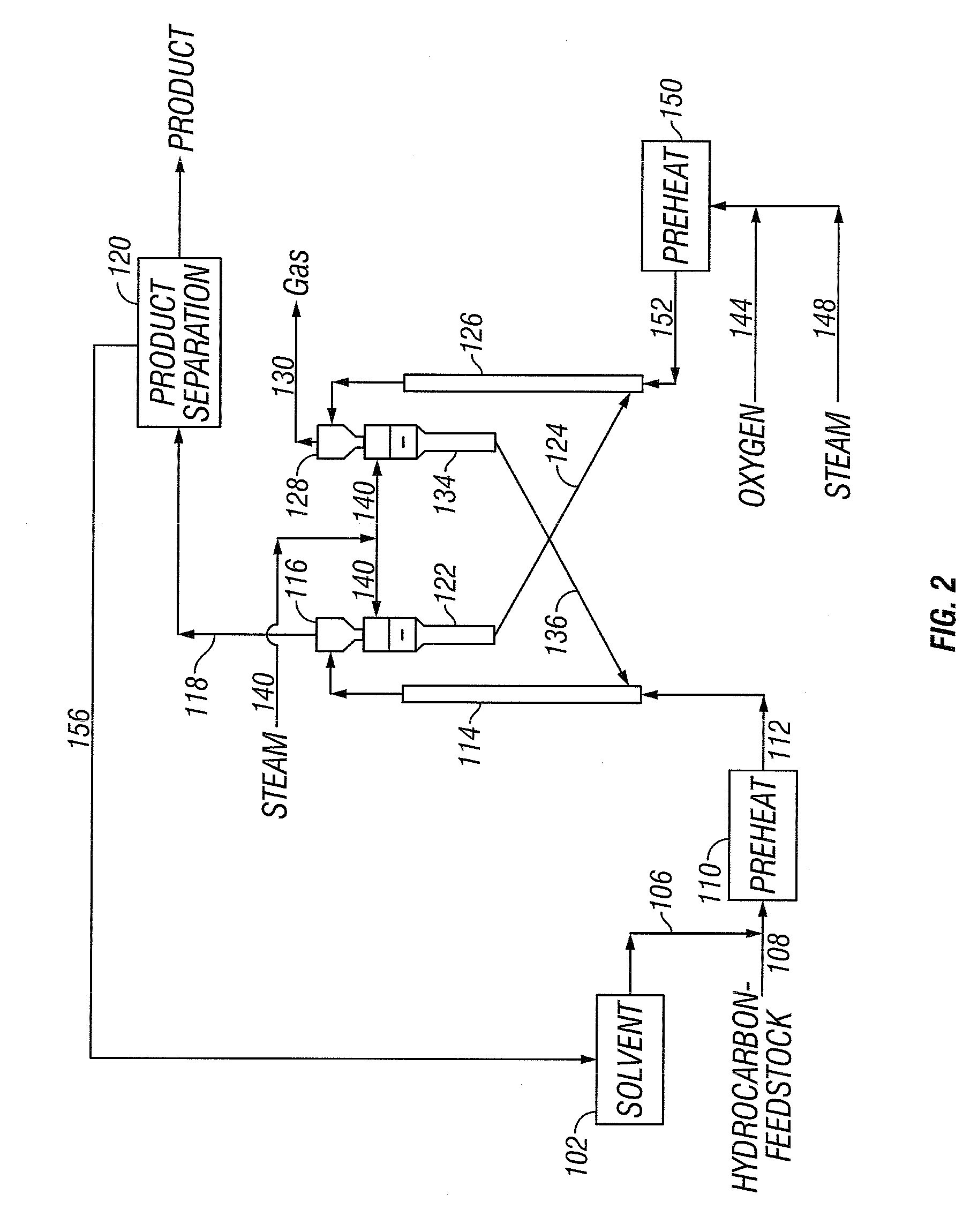Supercritical hydrocarbon conversion process
a hydrocarbon conversion and supercritical technology, applied in the direction of hydrocarbon oil cracking process, thermal non-catalytic cracking, cadmium sulfide, etc., can solve the problems of incomplete conversion of high molecular weight compounds and difficult processing
- Summary
- Abstract
- Description
- Claims
- Application Information
AI Technical Summary
Benefits of technology
Problems solved by technology
Method used
Image
Examples
Embodiment Construction
[0040]The present invention addresses the processing of petroleum and hydrocarbons from other feedstock sources, desirably its fractions and similar materials containing hydrocarbons having boiling points greater than 538° C. (1000° F.), using supercritical conversion with a hydrocarbon or mixture of hydrocarbons as the solvating medium for the high boiling hydrocarbon feed. The conversion occurs in a reaction zone at a temperature above the critical temperature of the hydrocarbon feedstock-solvent mixture, which can be estimated by employing conventional equation of state calculations. The desired reaction temperature can be achieved by simultaneously introducing the solvent-feed mixture and the hot particulates into the reaction zone, wherein the feedstock-solvent mixture is preheated to a temperature below the desired reaction temperature to avoid premature coking, and the hot particulates initially are at a temperature considerably above the desired reaction temperature, such th...
PUM
| Property | Measurement | Unit |
|---|---|---|
| boiling points | aaaaa | aaaaa |
| boiling points | aaaaa | aaaaa |
| boiling points | aaaaa | aaaaa |
Abstract
Description
Claims
Application Information
 Login to View More
Login to View More - R&D
- Intellectual Property
- Life Sciences
- Materials
- Tech Scout
- Unparalleled Data Quality
- Higher Quality Content
- 60% Fewer Hallucinations
Browse by: Latest US Patents, China's latest patents, Technical Efficacy Thesaurus, Application Domain, Technology Topic, Popular Technical Reports.
© 2025 PatSnap. All rights reserved.Legal|Privacy policy|Modern Slavery Act Transparency Statement|Sitemap|About US| Contact US: help@patsnap.com



